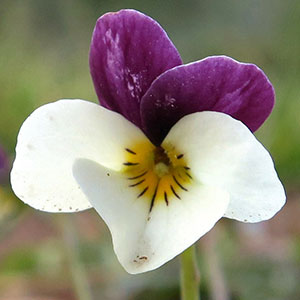Viola hallii
Viola cucullata
Hall's violet, Oregon violet, wild pansy
blue marsh violet, marsh blue or northern bog or marsh or blue marsh violet, marsh blue violet, violette cucullée
1–3, decumbent or ascending to erect, ca. 1/2 subterranean, glabrous, clustered on single, short, vertical, deep-seated caudex.
basal and cauline;
basal: 1–4, palmately compound, ± 2-ternate or 3-ternate, leaflets 3;
stipules adnate to petiole, forming 2 linear-lanceolate wings, unlobed, margins entire, apex of each wing free, acute;
petiole 5–8 cm, glabrous;
blade ovate to deltate, 2.8–6 × 2.6–6.5 cm, ± coriaceous, base tapered, ultimate lobes narrowly elliptic, lanceolate, or oblanceolate, 1–7 mm wide, margins entire, ciliate or eciliate, apex acute, mucronulate, surfaces glabrous;
cauline similar to basal except: stipules usually lanceolate, sometimes broadly ovate, ± leaflike, margins toothed;
petiole 1.3–6 cm;
blade 2–4.8 × 1.2–5.5 cm.
basal, 4–8, ascending to erect;
stipules linear-lanceolate, margins entire, apex acute;
petiole 6–20 cm, usually glabrous;
blade unlobed, ovate to reniform, 1.5–11 × 1–9 cm, base reniform to cordate, margins crenate to serrate, ciliate, apex acute or obtuse to slightly caudate, surfaces glabrous, rarely pubescent.
2.5–11 cm, glabrous.
7–25 cm, glabrous or pubescent.
sepals lanceolate to ovate, margins ciliate, auricles 0.5–1 mm;
petals: upper 2 almost black abaxially, dark reddish violet adaxially, lower 3 pale yellow, cream, or ± white, lateral 2 bearded, with deep yellow to orange patch basally, dark reddish violet-veined, lowest with deep yellow to orange patch basally, dark reddish violet-veined, 5–18 mm, spur yellow, gibbous, 0.5–2 mm;
style head bearded; cleistogamous flowers absent.
sepals lanceolate, margins ciliate or eciliate, auricles 3–6 mm;
petals light to dark blue-violet to violet on both surfaces, upper 2 and lateral 2 darker basally, lateral 2 densely bearded, lowest white basally, dark purple-veined, 9–13 mm, spur color same as petals, gibbous, 2–3 mm;
style head beardless; cleistogamous flowers on erect peduncles.
ellipsoid, 4–12 mm, glabrous.
ellipsoid to ± ovoid, 10–15 mm, glabrous.
light brown, shiny, 3.2–3.5 mm.
beige, mottled to bronze, 1–2 mm.
= 60, 72.
= 54.
Viola hallii
Viola cucullata
Viola hallii was discovered on the grounds of Willamette University in Salem, Oregon, by Elihu Hall, a professor at that institution (V. B. Baird 1942). Leaves of V. hallii are similar to V. beckwithii.
(Discussion copyrighted by Flora of North America; reprinted with permission.)
Viola cucullata reportedly hybridizes with V. sororia (= V. ×bissellii House), V. brittoniana (= V. ×notabilis E. P. Bicknell), and V. sagittata var. sagittata (= V. ×porteriana House).
(Discussion copyrighted by Flora of North America; reprinted with permission.)


